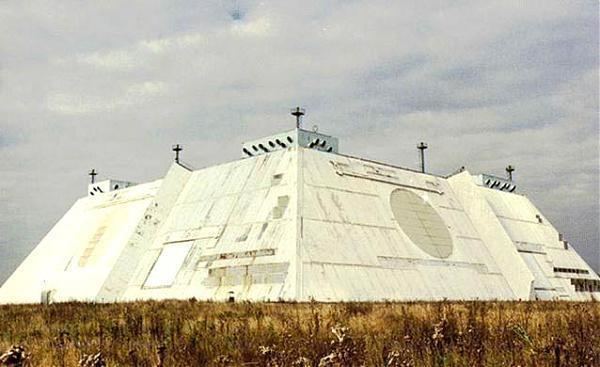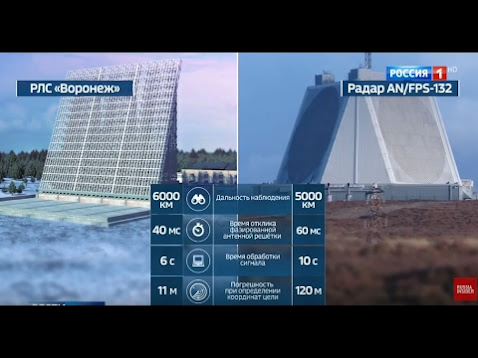... here is where I disagree with him dramatically.
It is exactly the other way around, not to speak of the fact that the US was lagging in advanced early warning radar systems behind not just Russia, but Soviet Union already in 1970s and 1980s. The proof is in the pudding. American nominally "strategic" system GMD (I will omit here a dubious effectiveness of it) is "run" by the BMEWS and its "derivatives" detection and targeting contour, aka Solid State Phased Array Radar, including its latest AN/FPS-132 Upgraded Early Warning Radar, plus some launch detecting space based assets (satellites). Here is one of those, spread by the US across the world from UK to Qatar.
Here is Russia's older but still well designed Don phased array 360 degrees radar and some intro to Russia's ABM system.
Here are some fresh (2021) explanations about venerable Don.But, of course, since 2010s Russia deploys an astounding variety of "BMEWS" radar such as Voronezh and here is 2018 "coverage":
This charade about Russia's ABM system in the US media is becoming really nauseating, especially against the background of S-500 beginning to be fully combat deployed and its radar is fully networked with both Voronezh and Don systems, as well as any other early warning radar system capable to allow S-500 radar to monitor the air and space to the depth of 3000 kilometers. With A-235 Nudol having its mobile version developed, and with S-550 getting ready to deploy--these are capabilities the US simply doesn't have. All listed above Russian systems are designed not only to intercept ICBMs but are fully capable of defeating hypersonic maneuverable blocks. I like this condescending tone in this article:
Obviously, comparing THAAD to S-500 with its 600 kilometer range and full low-orbit anti-satellite capability is a an exercise in arrogance because it is akin to comparing a VW Beetle to a 18-wheeler truck. With S-550 (alleged) range in excess of 1,000 kilometers and who knows what other capabilities and all of those systems fully integrated into the netcentric ABM and AD defense capability--the US has NOTHING comparable to that. But in the end, with first RS-28 Sarmat ICBMs arriving to full combat duty by the end of this year and first Avangard regiment (soon, full division of RVSN) being already in full combat readiness near Orenburg, the US ABM system simply ceases to matter in case, God forbids, serious war.
So, this silly talk of comparing Russia and US early warning systems and what they provide should stop because those desperate attempts to grasp the last straw of the myth of the US military "superiority" is a waste of time and, in the end, doesn't serve well the reputation, in this case, of a very solid and important American military thinker such as very respected by me Colonel Douglas MacGregor. He is a good man and serious professional, but I am on record, and am ready to repeat it again: the United States lost the arms race to Russia, especially in matters of truly high-end systems in the foundation of a nuclear deterrents and early warning. Note: I didn't even address Russia's space based assets.



No comments:
Post a Comment